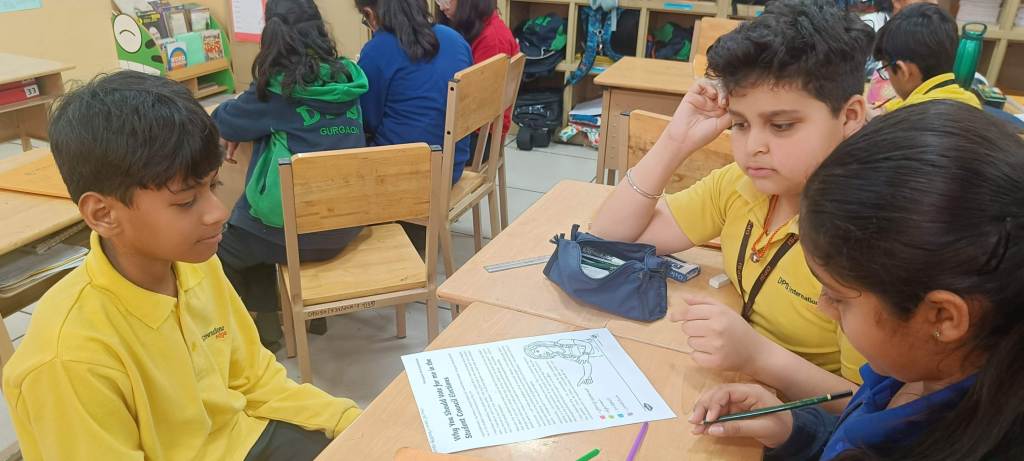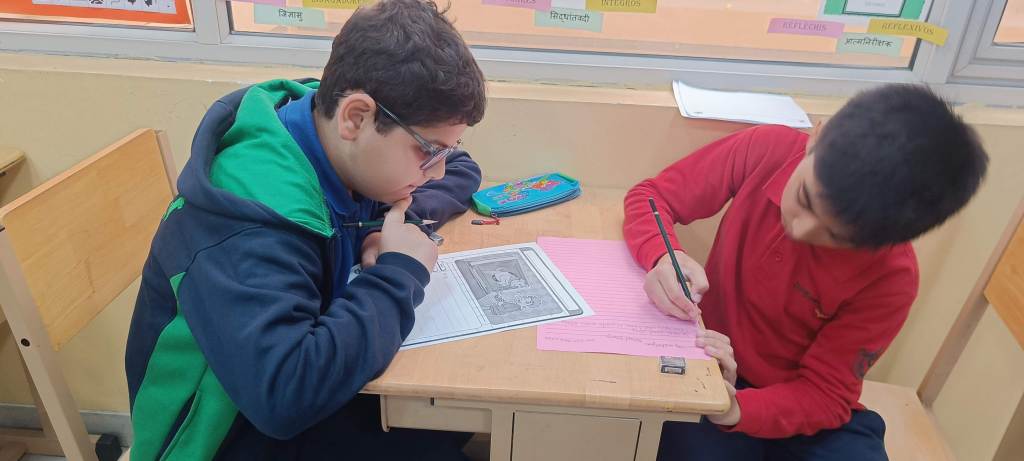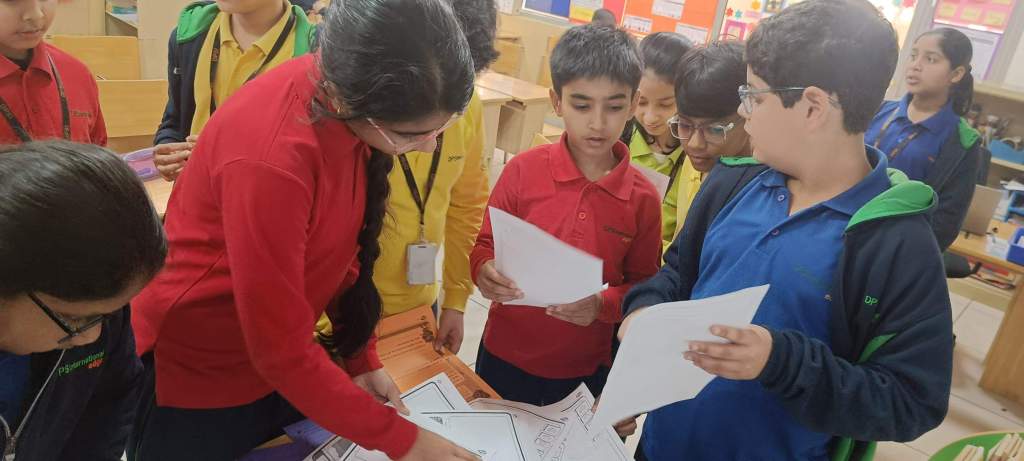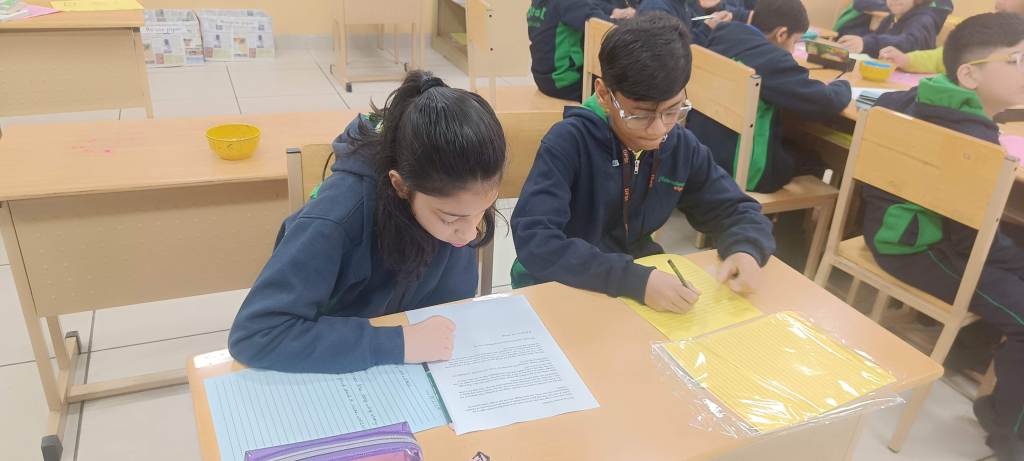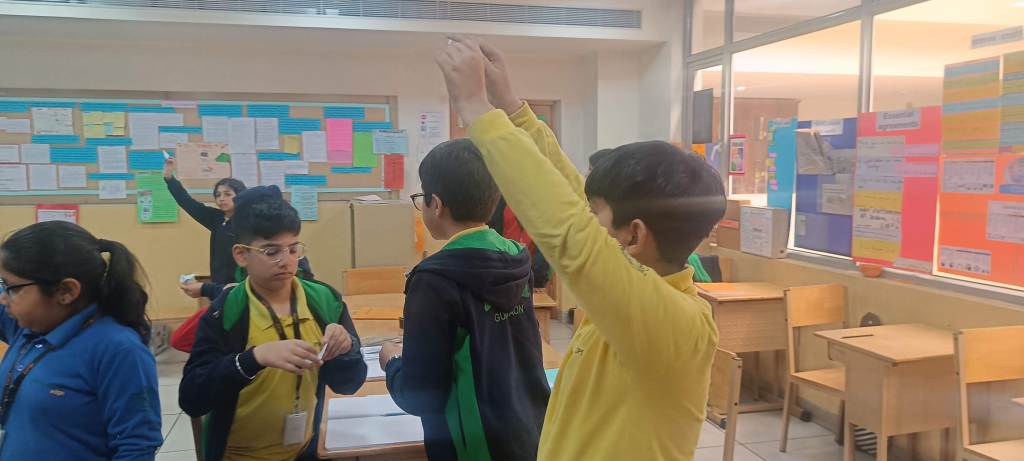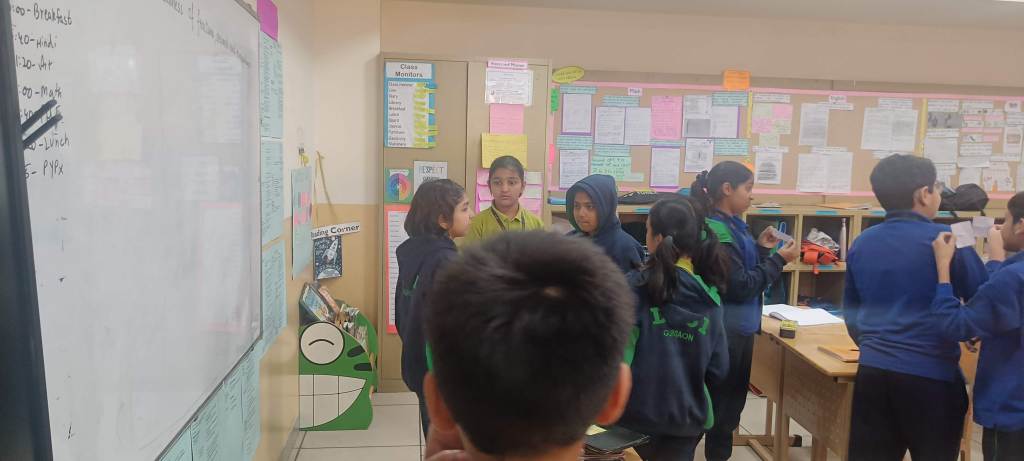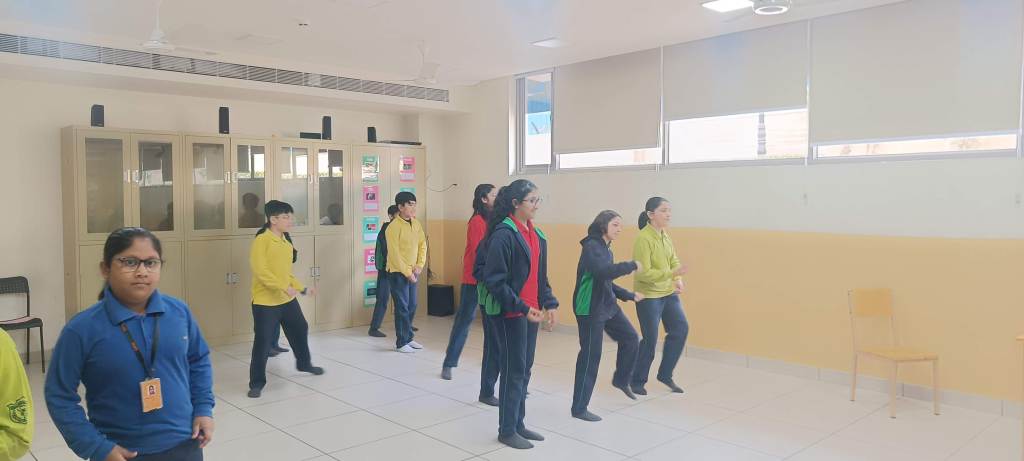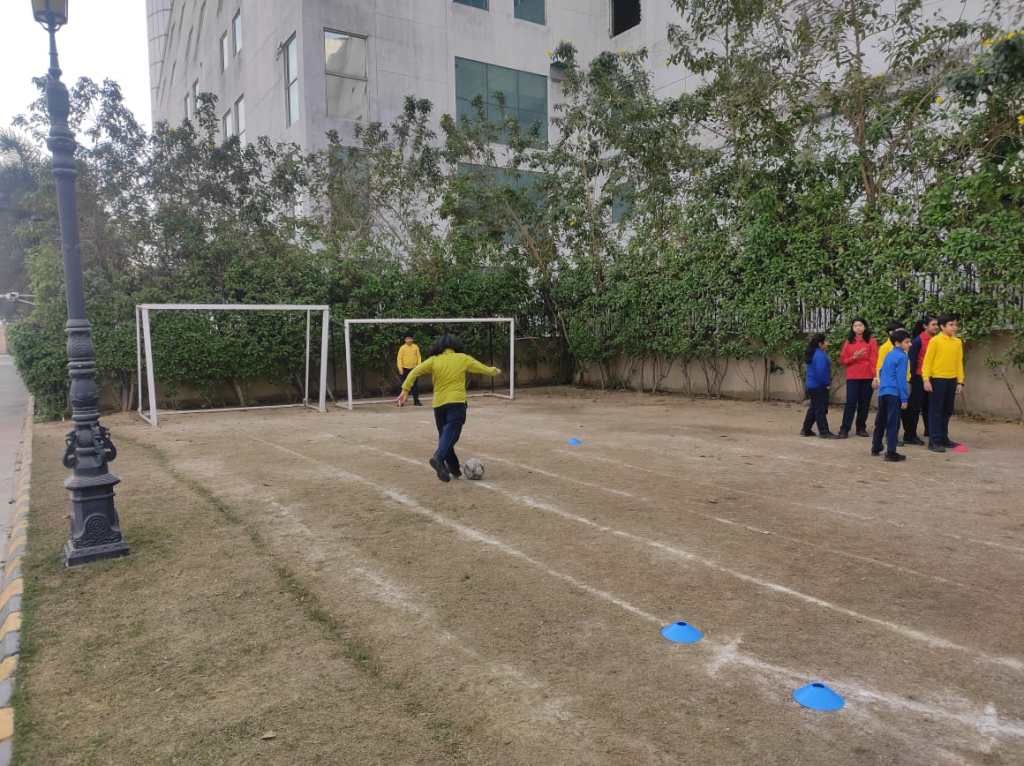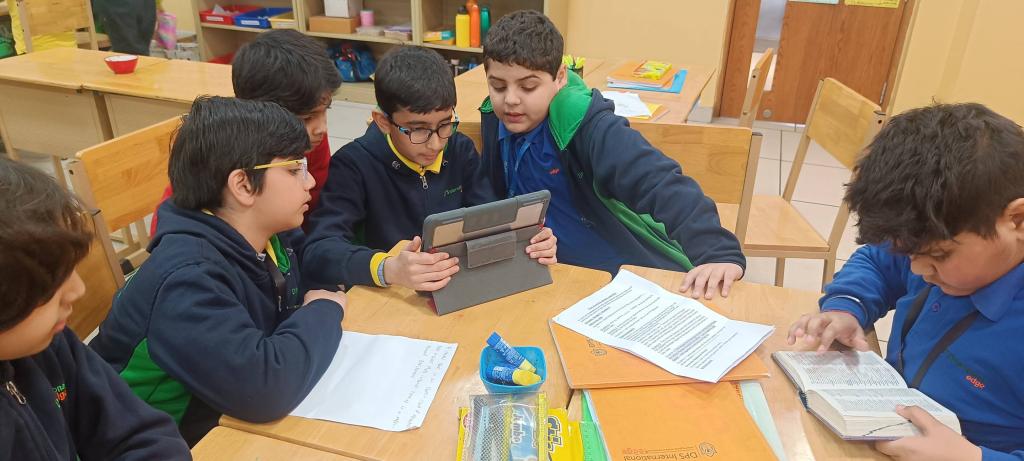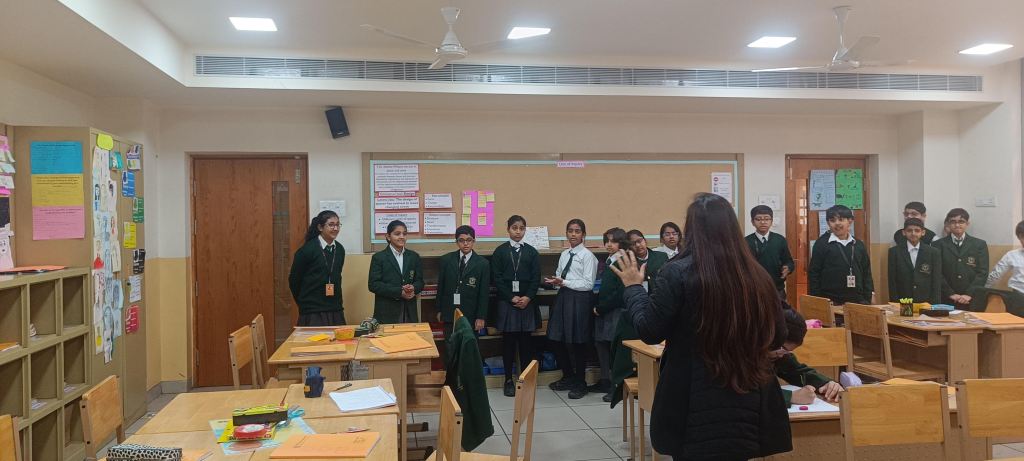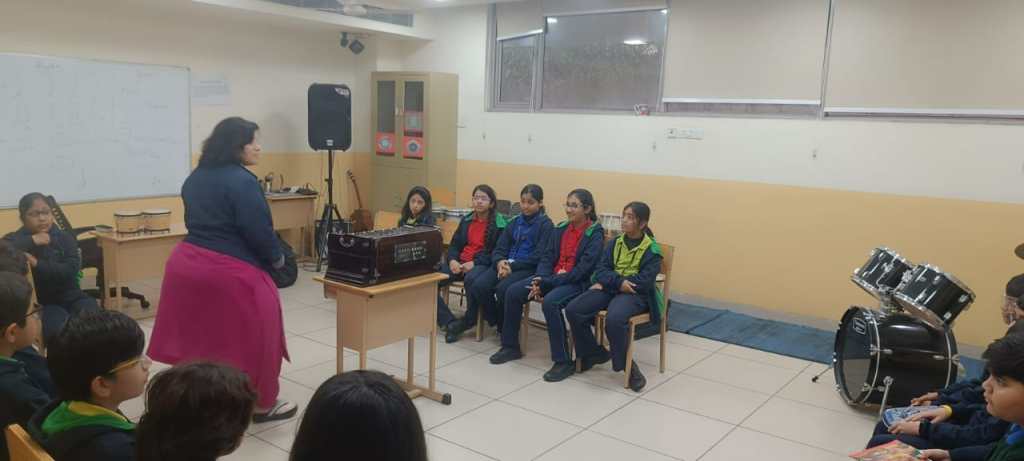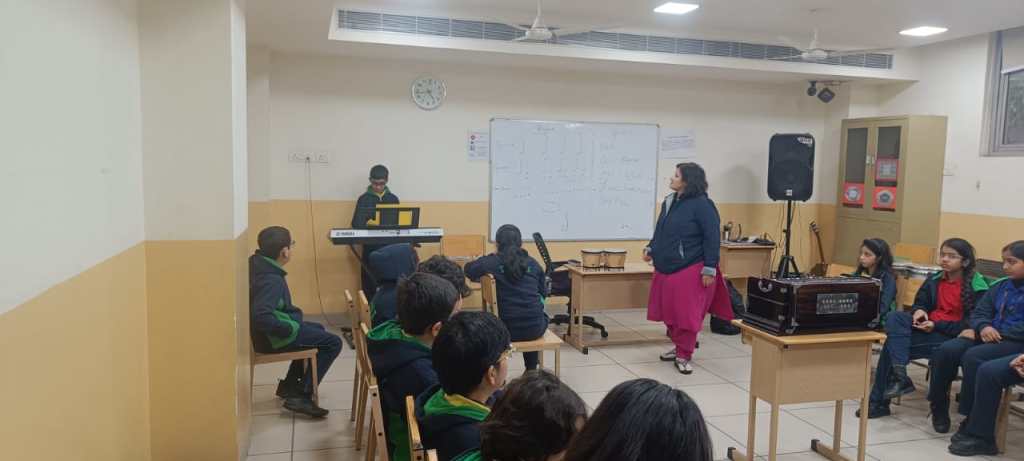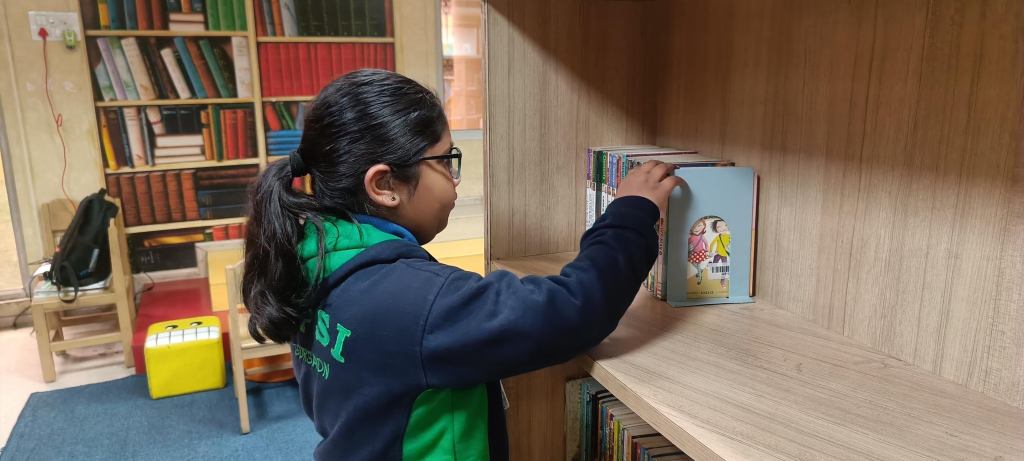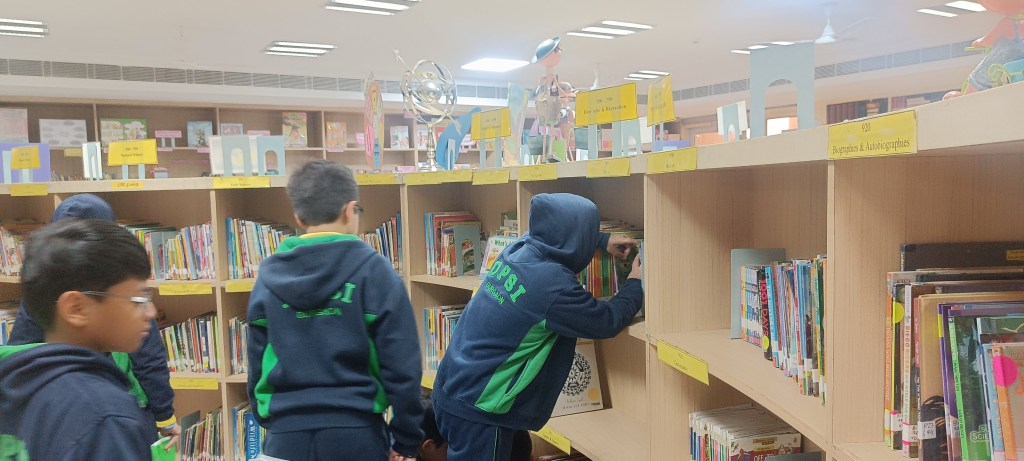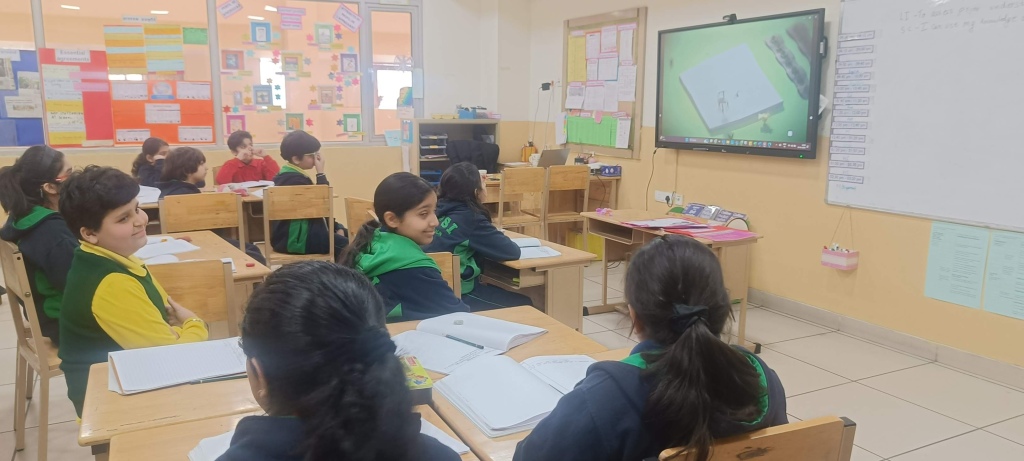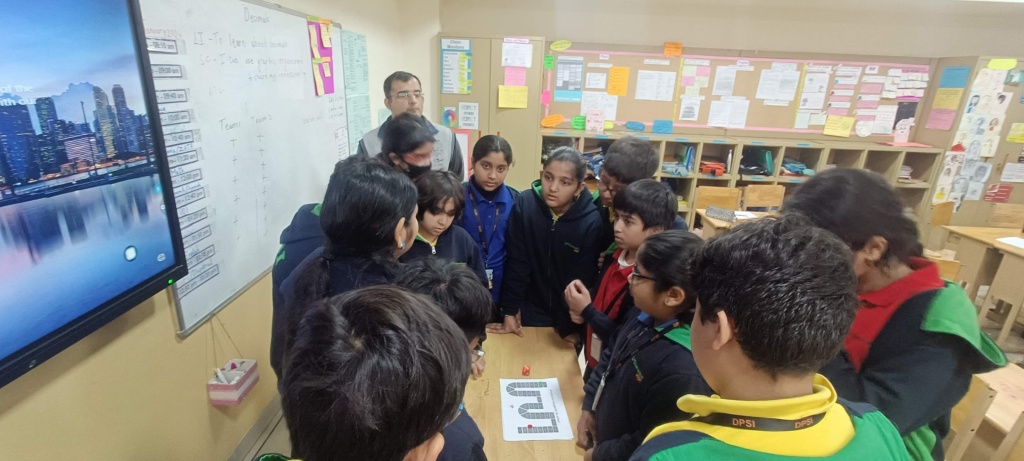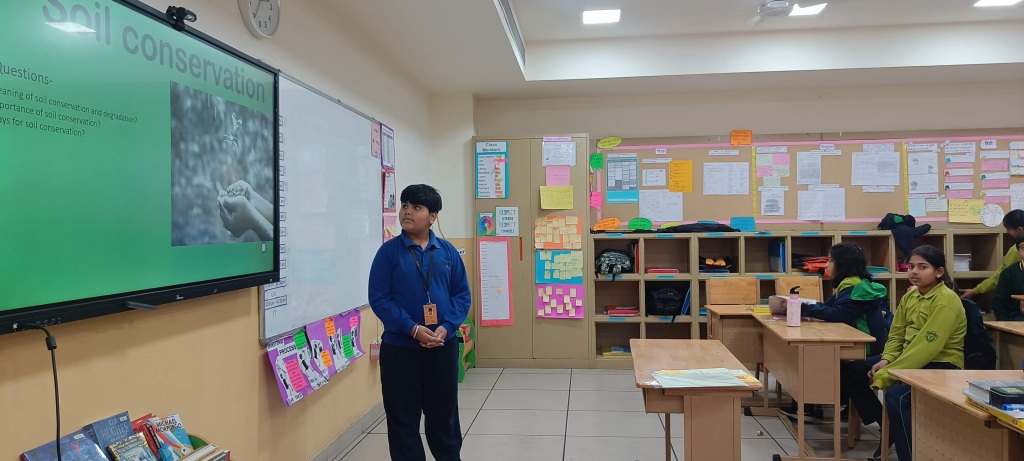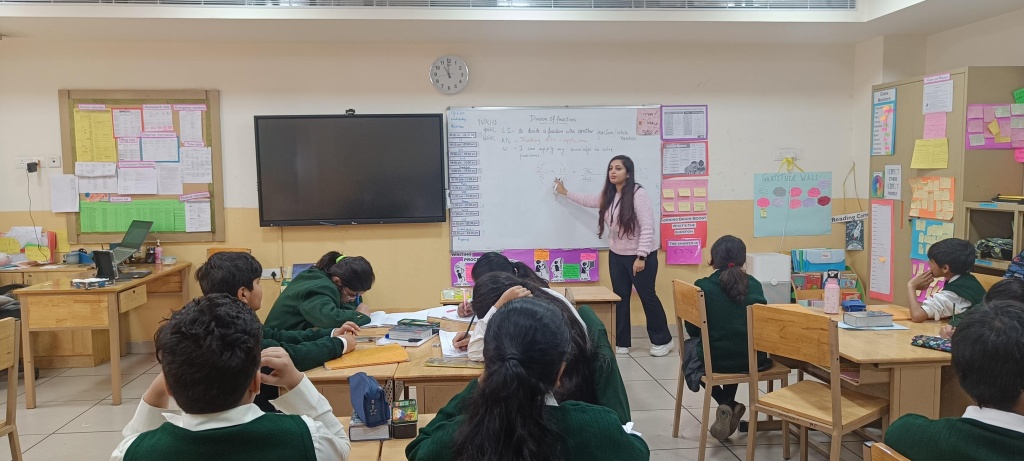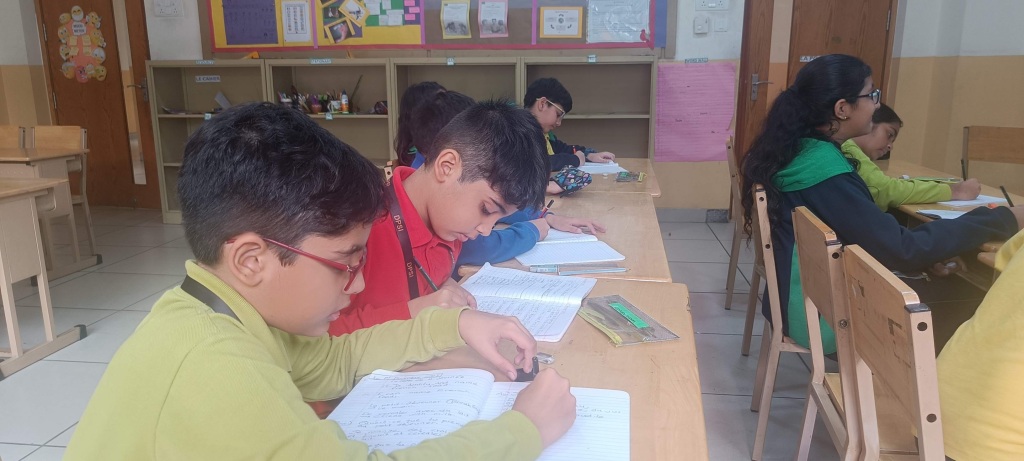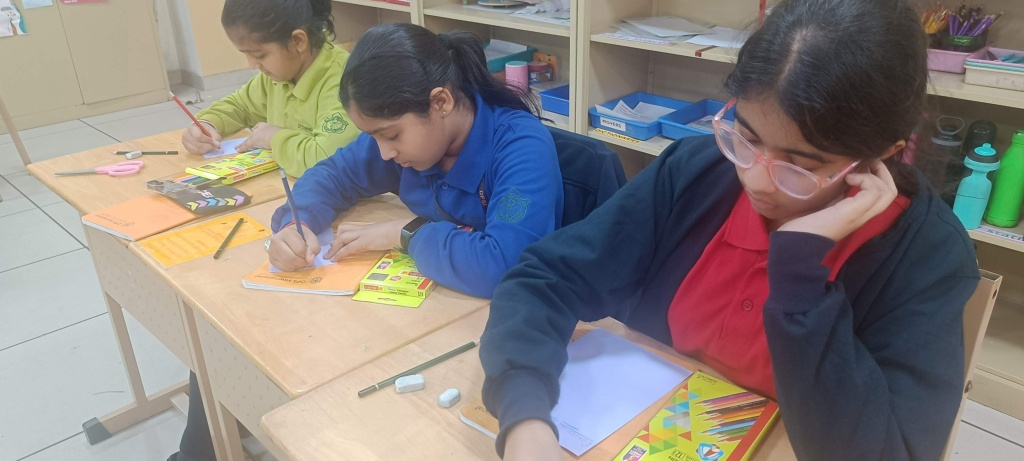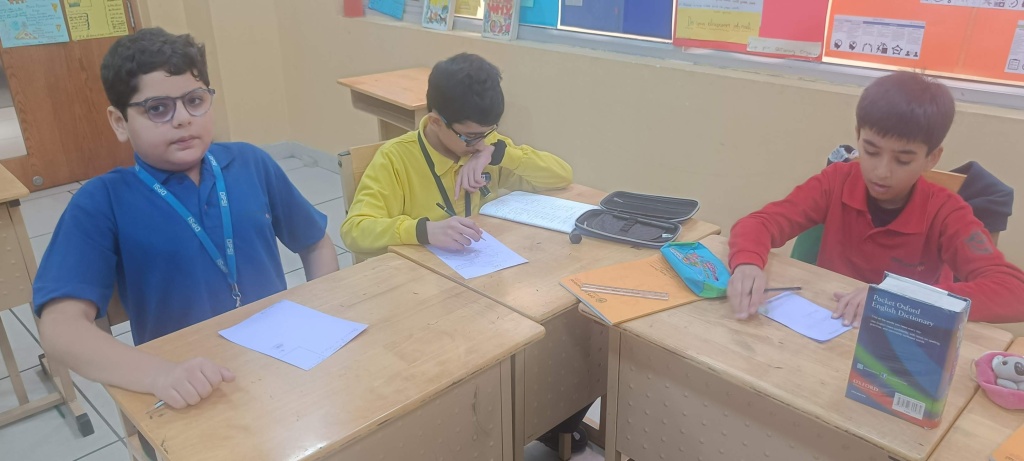UOI
After the successful culmination of the PYP exhibition last week, students have been looking forward to an inquiry related to the new unit on ‘Growth’. They tuned in to the Transdisciplinary theme ’Who we are’ through an engagement where students chose a sub-strand of the TD theme as a group, and wrote their understanding about the same. Different groups then presented their understanding to their peers. This was followed by a discussion where students justified that the TD theme was ‘Who we are’.
English
Students collaborated to strengthen their understanding of the elements of a biography. They used iPads and a range of resources to respond to the following questions:
- What are the features or elements of a biography? Form
- What is the purpose of writing a biography? Function
- Why might two biographies about the same person be different? Perspective
- What is the impact of a biography? Causation
- What is our responsibility when writing a biography?
Their findings were recorded in the journal.
They listened to a podcast ‘Love, Hope and Wonder: How to Understand the World – Sir Michael Morpurgo’ in which the author shared the stories from his life and career and core values – fairness and kindness. They used note-taking skills to record salient points which were added to a collaborative information board. They evaluated the podcast as a primary source and explored secondary sources, thus revising the importance of primary and secondary sources to the research process.
- Mathematics
Over the last week, students have been exploring the concept of ratios, which involves comparing similar quantities and understanding their relationships. By engaging in discussions, and examining real-world examples, learners were able to gain a deeper understanding of ratios and how they apply to various aspects of our daily lives.
Hindi
Students enhanced their listening comprehension skills as they listened to a story ’तोते का निर्णय’ and wrote answers based on the same. This engagement fostered the enhancement of their writing skills and vocabulary acquisition. Students attempted an assessment based on grammar concepts taught in class, including punctuations (विरामचिह्न ), idioms(मुहावरे), and comprehension.
French
Students revisited the different concepts such as conjugation of er ending verbs, its rules, and how to put them in phrases. They also learned about reflexive verbs( also called pronominal verbs) which are used to depict an action done on oneself. Subsequently, they learned how to conjugate them, associated rules, and how to use them in making phrases. Students used these phrases to list their daily routines using reflexive verbs. They demonstrated their understanding by attempting questions in class using left elbow partner strategy.
Reference link: https://www.liveworksheets.com/w/fr/francais-langue-etrangere-fle/652049
Spanish
Students delved into the concept of using conjunctions and connectors in Spanish. Students then wrote a short paragraph based on a topic of their choice while using conjunctions and connectors. Students were familiarized with the essential verb costar and its conjugations. Subsequently, they framed sentences to create question-and-answer pairs depicting a conversation at a shop for the purchase of clothes while making use of the verb costar.
ICT
Students continued creating their websites using Web Tool ‘Google Sites’. They learned how to enter data in the cells and use formulas in Microsoft Excel.
Visual Art
Students resumed their classes and continued exploring the ongoing topic of Claude Monet’s Water Lilies. Some students began by drawing, while others began colouring or painting with their preferred colours and techniques.
Music
Through warm-ups, students honed their singing abilities with precision and enthusiasm. They were engaged in revising the songs they had previously learned, ensuring mastery, confidence, and dynamic singing. This infused the classroom with a vibrant energy that inspired active participation from all, creating an environment of joyful learning.
They were introduced to the ‘Taal’ rhythm, which will serve as a rhythmic foundation for improvising and performing intricate rhythmic patterns.
Dance
Students learned the significance of contraction, expansion, fall, and recovery in choreography. Students enjoyed participating in a dance routine that was choreographed based on the same concepts. Students also learned about the significance of space through the lens of dance where they were introduced to the concept of different types of performing spaces.
PHE
The students eagerly engaged in dynamic warm-up and cool-down exercises. During swimming lessons, they executed freestyle and backstroke techniques, In tennis lessons, they focused on playing point matches and rallies, emphasizing backhand strokes.
Library
The excitement among students for the upcoming rounds of scrabble competition is palpable, as they eagerly anticipate showcasing their skills. During library lessons and reading time, they have been actively immersed in reading books, magazines, newspapers, and even dictionaries. This comprehensive approach has helped them enrich their vocabulary and hone their literacy skills, preparing them for the challenges of the game.
Round 1 of the Scrabble competition was recently played during library lessons, adding an element of friendly competition and strategic thinking to their academic routine. The selected finalists from this round will advance to compete in the final matches in the upcoming weeks. This progression not only fuels their enthusiasm but also reinforces the idea that Scrabble is not just a game but a tool for continuous learning and skill development.
SEL
Through the story ‘Guess who’ , students learned about the impact of their peers’ words, actions, and behaviour on their feelings, leading to discomfort and sometimes improper responses. They were taught various methods to control their emotions effectively in these situations, equipping them with strategies to handle such scenarios differently.



